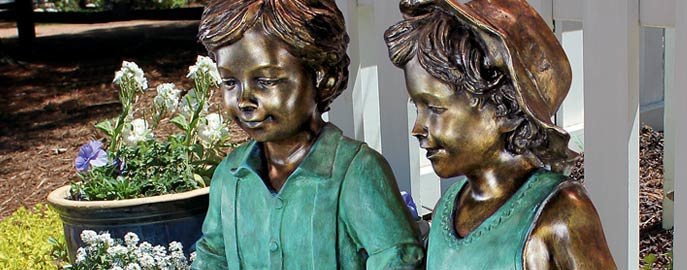
What Are The Stories and Themes Captured in Bronze Children Statues?
Bronze children statues carry powerful themes that touch on universal childhood experiences. These sculptures are not just pieces of art. They celebrate innocence, curiosity, and joy. They are a strong medium through which people are reminded of the simpler moments in life. These statues are popular in parks, schools, and public spaces. Read on to know more about the stories and meanings these statues reveal, which succeed in capturing the beauty of youth in a way that resonates across cultures and generations.
Celebrating Childhood Joy
Bronze children statues often capture the pure joy that defines early years. In these sculptures, children are shown in playful activities, like laughing, running, or dancing. The artists aim to highlight the innocence and carefree nature of youth. These statues remind viewers of the happiness found in simple moments, bringing a sense of nostalgia and warmth. Bronze children statues showing joy and playfulness are widely admired for how they evoke memories of one’s childhood or the joy seen in younger generations.
Learning and Curiosity Themes
The themes of curiosity and discovery are commonly seen in bronze children statues. Many statues depict children engaging in activities that show their eagerness to learn and explore. You might see a statue of a child holding a book or peering into a bug jar, representing the thirst for knowledge. These artworks serve as symbols of learning, showing how children naturally want to understand their world. Bronze children statues like these are popular in educational spaces because they reflect the spirit of curiosity essential to growth.
Friendship and Family Bonds
Statues of children also frequently celebrate the bonds of friendship and family. Artists often capture children together, whether they’re holding hands, sharing a secret, or playing a game. These statues remind viewers of the importance of connection, friendship, and the strong family bonds that shape childhood. Placing these statues in parks or community areas creates a sense of unity and encourages viewers to reflect on their relationships. The emphasis on connection makes these bronze children statues feel relatable and heartwarming.
Imagination and Wonder
Imagination and wonder are popular themes, showing how children’s creativity makes life magical. Many bronze children statues capture moments of fantasy, such as a child pretending to be a superhero, reading a fairy tale, or daydreaming. These sculptures emphasize how children view the world with wonder and endless possibilities. By portraying imagination, artists remind adults of the creative spirit and dreams that often define childhood. Bronze children statues capturing these moments of wonder are beloved for their ability to take viewers back to simpler, imaginative times.
Timeless Symbols of Hope
These statues capture childhood moments and act as symbols of hope for the future. Bronze children statues in public places serve as reminders of youth, optimism, and growth. They represent the hope that society places in future generations, symbolizing the belief in progress, compassion, and positivity. By showing children engaged in joyful or thoughtful activities, these statues connect with viewers on a deeper level, inspiring hope for what lies ahead.
Conclusion
Bronze children statues celebrate the themes of joy, curiosity, friendship, and imagination. These sculptures remind us of the innocent and heartfelt moments of childhood that shape us all. Whether displayed in parks, schools, or city squares, they resonate with people of all ages, sparking memories and emotions that transcend time. Ultimately, such statues serve as lasting symbols of youth and hope, enriching public spaces with their timeless stories and themes.



